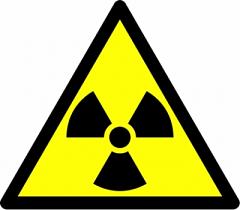Fukushima: Plutonium fallout, Radiation sickness spreads
Plutonium has for the first time been detected in soil outside Japan’s troubled Fukushima nuclear power plant, crippled by the March 11 quake-tsunami disaster, Echo Moskvy radio reports citing education and science ministry officials in Tokyo.
Wikipedia notes that Plutonium was first synthesized in 1940 by a team led by Glenn T. Seaborg and Edwin McMillan at the University of California, Berkeley laboratory by bombarding uranium-238 with deuterons. Trace amounts of plutonium were subsequently discovered in nature. Producing plutonium in useful quantities for the first time was a major part of the Manhattan Project during World War II, which developed the first atomic bombs. The first nuclear test, "Trinity" (July 1945), and the second atomic bomb used to destroy a city (Nagasaki, Japan, in August 1945), "Fat Man", both had cores of plutonium-239. Human radiation experiments studying plutonium were conducted without informed consent, and a number of criticality accidents, some lethal, occurred during and after the war. Disposal of plutonium waste from nuclear power plants and dismantled nuclear weapons built during the Cold War is a nuclear-proliferation and environmental concern. Other sources of plutonium in the environment are fallout from numerous above-ground nuclear tests (now banned).
Isotopes and compounds of plutonium are radioactive and accumulate in bone marrow. Contamination by plutonium oxide has resulted from a number of nuclear disasters and radioactive incidents including military nuclear accidents where nuclear weapons have burned. Studies of the negligible effects of these smaller releases, as well as of the widespread radiation poisoning sickness and death following the atomic bombings of Hiroshima and Nagasaki, have provided considerable information regarding the dangers, symptoms and prognosis of Radiation poisoning.
During the decay of plutonium, three types of radiation are released—alpha, beta, and gamma. Alpha radiation can travel only a short distance and cannot travel through the outer, dead layer of human skin. Beta radiation can penetrate human skin, but cannot go all the way through the body. Gamma radiation can go all the way through the body. Alpha, beta, and gamma radiation are all forms of ionizing radiation. Either acute or longer-term exposure carries a danger of unfavorable health outcomes including radiation sickness, cancer, and death. The danger increases with the amount of exposure.
Even though alpha radiation cannot penetrate the skin, ingested or inhaled plutonium does irradiate internal organs. The skeleton, where plutonium is absorbed, and the liver, where it collects and becomes concentrated, are at risk. Plutonium is not absorbed into the body efficiently when ingested; only 0.04% of plutonium oxide is absorbed after ingestion. Plutonium absorbed by the body is excreted very slowly, with a biological half-life of 200 years. Plutonium passes only slowly through cell membranes and intestinal boundaries, so absorption by ingestion and incorporation into bone structure proceeds very slowly.
Plutonium is more dangerous when inhaled than when ingested. The risk of lung cancer increases once the total radiation dose equivalent of inhaled plutonium exceeds 400 mSv. The U.S. Department of Energy estimates that the lifetime cancer risk from inhaling 5,000 plutonium particles, each about 3 microns wide, to be 1% over the background U.S. average. Ingestion or inhalation of large amounts may cause acute radiation poisoning and death; no human is known to have died because of inhaling or ingesting plutonium, and many people have measurable amounts of plutonium in their bodies.
Increased radiation content has previously been detected in vegetables, mushrooms, meat and milk in Fukushima Prefecture and further afield.
Comments
There are 0 comments on this post













